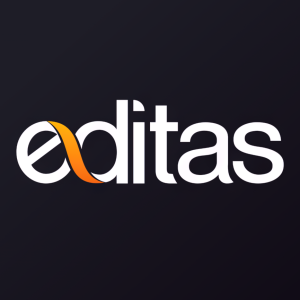Editas Medicine Reports New In Vivo Data Highlighting the Potential of Editas’ Gene Upregulation Strategy in HSCs at the American Society of Gene and Cell Therapy Annual Meeting
Rhea-AI Summary
In non-human primates, a single intravenous dose achieved up to 47% HBG1/2 editing levels in HSCs. In humanized mice, the treatment reached 48% editing in long-term HSCs. Both results exceeded the 25% threshold required for therapeutic benefit.
The company's tLNP formulation showed improved liver de-targeting compared to standard LNPs, and utilizes proprietary AsCas12a technology for high-efficiency editing while minimizing off-target effects. The approach mimics naturally occurring mechanisms of hereditary persistence of fetal hemoglobin (HPFH).
Positive
- Achieved 47-48% editing levels in both NHP and humanized mice studies, significantly exceeding the 25% threshold needed for therapeutic benefit
- Demonstrated successful single-dose administration with high efficiency HSC delivery
- Showed improved liver de-targeting compared to standard LNPs, potentially reducing side effects
- Uses clinically validated approach with proprietary AsCas12a technology for high efficiency and minimal off-target editing
Negative
- Still in pre-clinical development phase
- Results limited to animal studies, human trials yet to be conducted
News Market Reaction 1 Alert
On the day this news was published, EDIT declined 8.00%, reflecting a notable negative market reaction.
Data tracked by StockTitan Argus on the day of publication.
Data demonstrate therapeutically relevant editing levels using a clinically validated strategy, supporting its development as a novel, in vivo approach to treating sickle cell disease and beta thalassemia
CAMBRIDGE, Mass., May 14, 2025 (GLOBE NEWSWIRE) -- Editas Medicine, Inc. (Nasdaq: EDIT), a pioneering gene editing company, today shared new in vivo data demonstrating therapeutically relevant levels of HBG1/2 promoter editing in hematopoietic stem cells (HSCs) with a single dose of proprietary targeted lipid nanoparticle (tLNP) in humanized mice and non-human primates (NHPs). This clinically validated approach targeting HBG1/2 promoters to upregulate fetal hemoglobin (HbF) is in pre-clinical development as a potential transformative in vivo gene editing medicine for the treatment of sickle cell disease and beta thalassemia. The Company reported these data in a presentation available today and will detail the data in an oral presentation today at 1:30 p.m. CT/2:30 p.m. ET at the 28th Annual Meeting of the American Society of Gene and Cell Therapy (ASGCT) in New Orleans, LA, and virtually.
In these studies, the Company’s proprietary tLNP formulation delivered HBG1/2 promoter editing cargo to HSPCs and/or HSCs in humanized mice (mice engrafted with human CD34+ cells) and in NHPs. In an ongoing NHP study, administration of a single intravenous dose of Editas Medicine’s proprietary tLNP demonstrated high efficiency HSC delivery and achieved up to
“These findings are very encouraging and further support our approach to developing a potentially first- and best-in-class in vivo gene edited medicine for the treatment of sickle cell disease and beta thalassemia,” said Linda C. Burkly, Ph.D., Executive Vice President and Chief Scientific Officer, Editas Medicine. “We believe that translating these preclinical results to the clinic will address the continuing significant unmet need for a transformative gene edited medicine with the potential to improve the lives of people living with sickle cell disease and beta-thalassemia around the world.”
Editas Medicine’s in vivo HSC program targets HBG1/2 promoters to mimic naturally occurring mechanisms of hereditary persistence of fetal hemoglobin (HPFH) and utilizes proprietary AsCas12a to edit with high efficiency and minimize off-target editing. Editing the HBG1/2 promoters with AsCas12a with the investigational medicine reni-cel led to robust increases in fetal hemoglobin (HbF) and total hemoglobin (Hb) in clinical trials.
Oral Presentation Details:
Title: In Vivo Delivery of HBG1/2 Promoter Editing Cargo to HSC of Humanized Mouse and Non-Human Primate with Lipid Nanoparticles
Session Date and Time: Wednesday, May 14, 2025, 1:30 p.m. – 1:45 p.m. CT
Session Title: Translational Applications of Base and Prime Editors
Room: 265-268
Final Abstract Number: AMA353
Additional Editas Medicine presentations are below. Abstracts can be accessed on the ASGCT website, and the presentations will be posted on the Editas Medicine website during the conference.
Poster Presentations:
Title: Design and Development of Improved LNP Targeting Ligands for In Vivo Hematopoietic Stem Cell Editing
Session Date and Time: Tuesday, May 13, 2025, 6:00 p.m. – 7:30 p.m. CT
Session Title: Tuesday Poster Reception
Presentation Room: Poster Hall, Hall 12
Final Abstract Number: AMA245
Title: Design of Chemically Modified AsCas12a Guide RNAs for Increased Potency of LNP-Delivered Gene Editing Cargos
Session Date and Time: Tuesday, May 13, 2025, 6:00 p.m. – 7:30 p.m. CT
Session Title: Tuesday Poster Reception
Presentation Room: Poster Hall, Hall 12
Final Abstract Number: AMA420
Title: In Vivo Gene Editing and Disease-Associated Biomarker Reduction for Multiple Liver Targets in Non-human Primate Using AsCas12a Nuclease Delivered by LNP
Session Date and Time: Wednesday, May 14, 2025, 5:30 p.m. – 7:00 p.m. CT
Session Title: Wednesday Poster Reception
Presentation Room: Poster Hall, Hall 12
Final Abstract Number: AMA640
Title: In Vivo CRISPR Editing of Genetic Regulatory Regions Results in Functional Upregulation of Target Protein and Meaningful Reduction of Disease-Associated Biomarker in Mice
Session Date and Time: Wednesday, May 14, 2025, 5:30 p.m. – 7:00 p.m. CT
Session Title: Wednesday Poster Reception
Presentation Room: Poster Hall, Hall 12
Final Abstract Number: AMA351
About Editas Medicine
As a pioneering gene editing company, Editas Medicine is focused on translating the power and potential of the CRISPR/Cas12a and CRISPR/Cas9 genome editing systems into a robust pipeline of in vivo medicines for people living with serious diseases around the world. Editas Medicine aims to discover, develop, manufacture, and commercialize transformative, durable, precision in vivo gene editing medicines for a broad class of diseases. Editas Medicine is the exclusive licensee of Broad Institute’s Cas12a patent estate and Broad Institute and Harvard University’s Cas9 patent estates for human medicines. For the latest information and scientific presentations, please visit www.editasmedicine.com.

Media and Investor Contact: ir@editasmed.com







